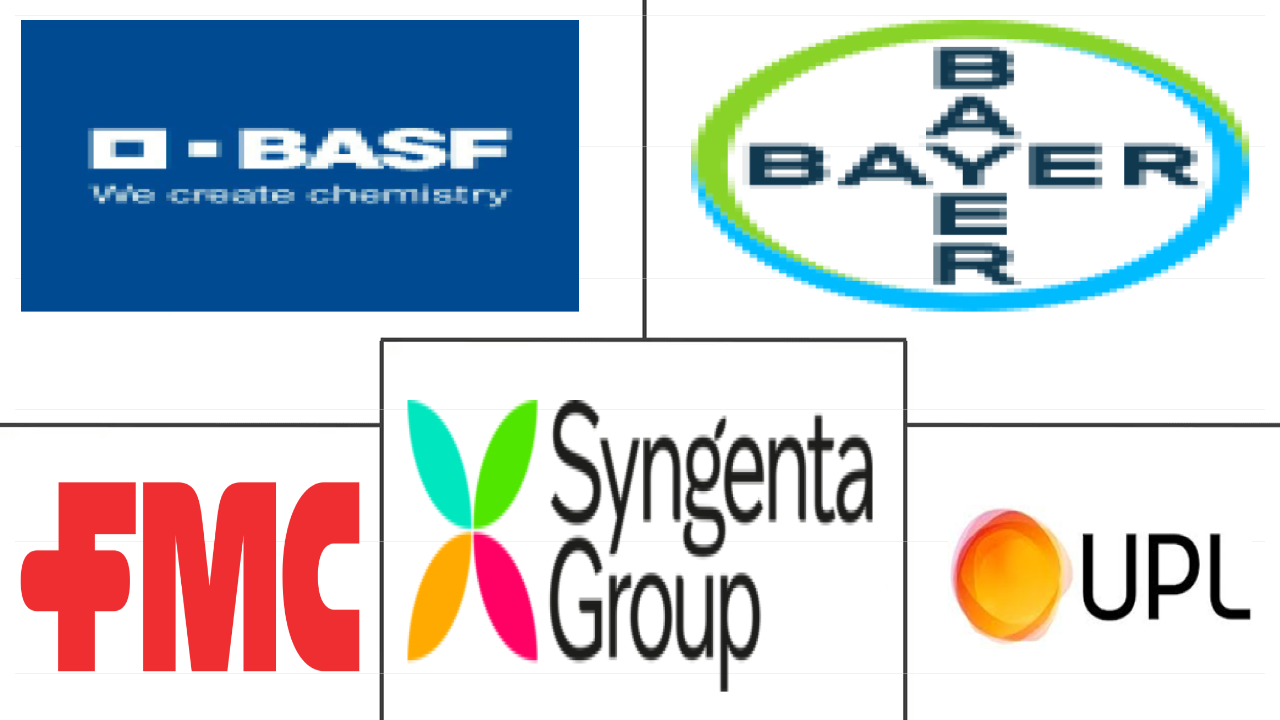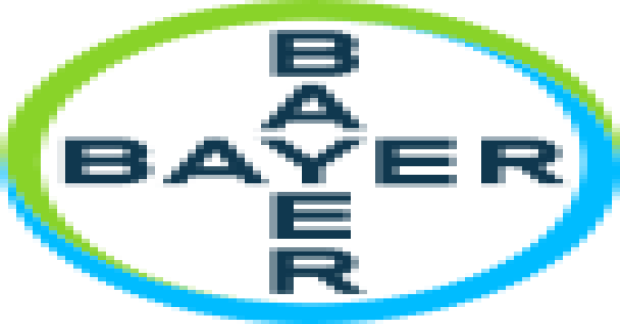Market Size of indonesia herbicide Industry
|
|
Study Period | 2017 - 2029 |
|
|
Market Size (2024) | USD 1.08 Billion |
|
|
Market Size (2029) | USD 1.48 Billion |
|
|
Largest Share by Application Mode | Soil Treatment |
|
|
CAGR (2024 - 2029) | 6.53 % |
|
|
Fastest Growing by Application Mode | Soil Treatment |
Major Players |
||

|
||
|
*Disclaimer: Major Players sorted in no particular order |
Indonesia Herbicide Market Analysis
The Indonesia Herbicide Market size is estimated at 1.08 billion USD in 2024, and is expected to reach 1.48 billion USD by 2029, growing at a CAGR of 6.53% during the forecast period (2024-2029).
1.08 Billion
Market Size in 2024 (USD)
1.48 Billion
Market Size in 2029 (USD)
6.47 %
CAGR (2017-2023)
6.53 %
CAGR (2024-2029)
Largest Segment by Application Mode
46.43 %
value share, Soil Treatment, 2023
The rising crop losses due to weeds and the growing usage of herbicides through soil treatment applications to control weeds are contributing to the growth of the herbicide market.
Largest Segment by Crop Type
46.58 %
value share, Pulses & Oilseeds, 2023
The expansion of cultivation of pulses and oilseeds, the need for effective weed control, and technological advancements in herbicides are expected to drive the market.
Fastest-Growing Segment by Crop Type
6.70 %
Projected CAGR, Pulses & Oilseeds, 2024-2029
The herbicide market continues to innovate herbicide technologies for pulses and oilseeds to offer improved solutions, enabling farmers to effectively manage weeds.
Leading Market Player 1
0.49 %
market share, Bayer AG, 2022

Bayer partnered with Oerth Bio with the aim of developing next-generation crop protection products based on Oerth Bio's innovative protein degradation technology.
Leading Market Player 2
0.40 %
market share, FMC Corporation, 2022

FMC Corporation provides various herbicides that are designed to assist farmers in controlling the most difficult and resilient weed species in a variety of crops.
Traditional method of applying herbicides through soil treatment mode and its effectiveness in controlling weeds in early growth stage may increase the adoption
- The herbicide market in Indonesia is driven by several factors, such as increasing agricultural activities, the need for weed control in various crops, and the adoption of advanced agricultural practices.
- The market is dominated by the soil treatment segment, which is expected to record a CAGR of 6.6%, by value, during the forecast period (2023-2029) as farmers recognize the benefits of soil treatment in weed management. Soil treatment offers effective weed control and lower weed competition, contributing to better crop establishment.
- Foliar application is a commonly used method in Indonesia. The herbicide market is expected to increase by a value of USD 150.3 million during the forecast period (2023-2029). The need to obtain large yields and retain crop quality is the major driver for using herbicides by foliar application. Weed disturbance affects low crop yields, both quality and quantity, and farmers want to protect their investment through the use of herbicides in integrated pest management strategies to ensure a profitable harvest.
- The chemigation method is anticipated to witness notable growth in the coming years due to the increasing adoption of irrigation systems and the advantages of chemigation for precise and effective weed control.
- The market share of fumigation in Indonesia's herbicide market is expected to record a CAGR of 5.8% during the forecast period (2023-2029). Farmers are looking for more efficient and effective ways to combat weeds and enhance crop yields. They are expected to continue the adoption of foliar as a preferred method in the coming years due to its benefits in achieving effective weed control.
Indonesia Herbicide Industry Segmentation
Chemigation, Foliar, Fumigation, Soil Treatment are covered as segments by Application Mode. Commercial Crops, Fruits & Vegetables, Grains & Cereals, Pulses & Oilseeds, Turf & Ornamental are covered as segments by Crop Type.
- The herbicide market in Indonesia is driven by several factors, such as increasing agricultural activities, the need for weed control in various crops, and the adoption of advanced agricultural practices.
- The market is dominated by the soil treatment segment, which is expected to record a CAGR of 6.6%, by value, during the forecast period (2023-2029) as farmers recognize the benefits of soil treatment in weed management. Soil treatment offers effective weed control and lower weed competition, contributing to better crop establishment.
- Foliar application is a commonly used method in Indonesia. The herbicide market is expected to increase by a value of USD 150.3 million during the forecast period (2023-2029). The need to obtain large yields and retain crop quality is the major driver for using herbicides by foliar application. Weed disturbance affects low crop yields, both quality and quantity, and farmers want to protect their investment through the use of herbicides in integrated pest management strategies to ensure a profitable harvest.
- The chemigation method is anticipated to witness notable growth in the coming years due to the increasing adoption of irrigation systems and the advantages of chemigation for precise and effective weed control.
- The market share of fumigation in Indonesia's herbicide market is expected to record a CAGR of 5.8% during the forecast period (2023-2029). Farmers are looking for more efficient and effective ways to combat weeds and enhance crop yields. They are expected to continue the adoption of foliar as a preferred method in the coming years due to its benefits in achieving effective weed control.
| Application Mode | |
| Chemigation | |
| Foliar | |
| Fumigation | |
| Soil Treatment |
| Crop Type | |
| Commercial Crops | |
| Fruits & Vegetables | |
| Grains & Cereals | |
| Pulses & Oilseeds | |
| Turf & Ornamental |
Indonesia Herbicide Market Size Summary
The herbicide market in Indonesia is experiencing significant growth, driven by increasing agricultural activities and the need for effective weed control across various crops. The market is primarily dominated by the soil treatment segment, which is gaining traction due to its effectiveness in managing weeds and enhancing crop establishment. Foliar application remains a popular method, as it helps in achieving large yields and maintaining crop quality. The adoption of advanced agricultural practices, such as chemigation, is also on the rise, offering precise and effective weed control. Despite the challenges posed by herbicide-resistant weeds, the cultivation of herbicide-tolerant crops is helping farmers manage weed competition more effectively, thereby maximizing crop productivity.
The Indonesian herbicide market is characterized by a diverse range of products and a heavy reliance on imports from countries like China, Malaysia, the United States, Germany, and India. Major players in the market, including BASF SE, Bayer AG, FMC Corporation, Syngenta Group, and UPL Limited, are actively involved in partnerships and collaborations to enhance crop protection technologies and develop eco-friendly solutions. The market's fragmented nature and the significant rise in herbicide consumption per hectare indicate a growing demand for these products in the agricultural sector. However, the emergence of resistant weed populations due to the repeated use of certain herbicides poses a challenge, potentially impacting market dynamics and pricing in the future.
Indonesia Herbicide Market Size - Table of Contents
-
1. MARKET SEGMENTATION (includes market size in Value in USD and Volume, Forecasts up to 2029 and analysis of growth prospects)
-
1.1 Application Mode
-
1.1.1 Chemigation
-
1.1.2 Foliar
-
1.1.3 Fumigation
-
1.1.4 Soil Treatment
-
-
1.2 Crop Type
-
1.2.1 Commercial Crops
-
1.2.2 Fruits & Vegetables
-
1.2.3 Grains & Cereals
-
1.2.4 Pulses & Oilseeds
-
1.2.5 Turf & Ornamental
-
-
Indonesia Herbicide Market Size FAQs
How big is the Indonesia Herbicide Market?
The Indonesia Herbicide Market size is expected to reach USD 1.08 billion in 2024 and grow at a CAGR of 6.53% to reach USD 1.48 billion by 2029.
What is the current Indonesia Herbicide Market size?
In 2024, the Indonesia Herbicide Market size is expected to reach USD 1.08 billion.

